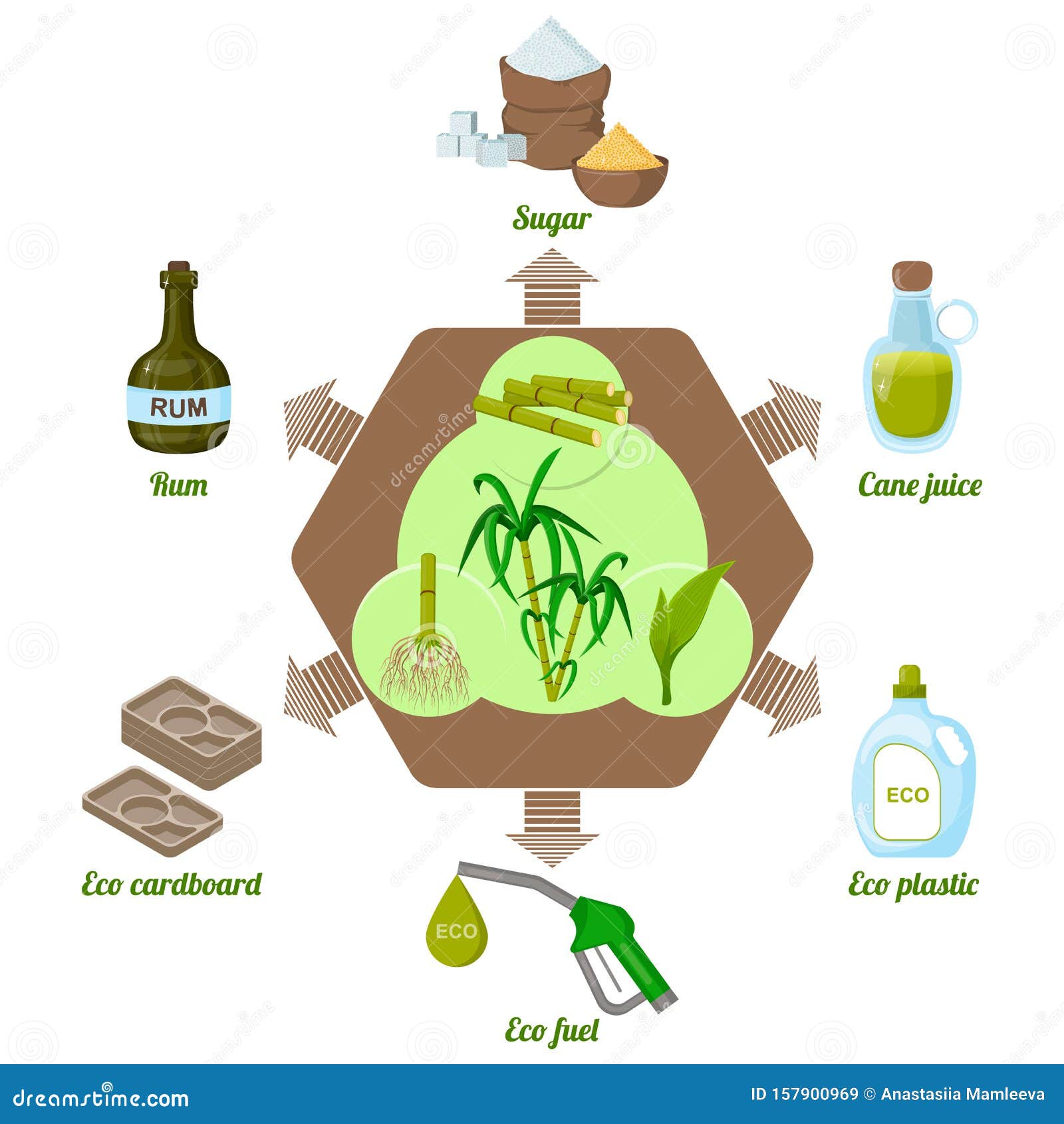What sugar cane products Reveal About Agro-Industrial Trends
A Deep Study Sugar Cane: Insights on Production, Supplies, and Item Advancement
Sugar cane plays a critical duty in farming, underpinning economic climates in exotic areas. Its farming entails detailed processes influenced by different ecological aspects. Cultivators deal with considerable obstacles, consisting of climate modification and market variations. Innovations in item advancement are emerging in response to advancing consumer demands. Understanding these characteristics is vital for comprehending the future of this vital plant and its influence on worldwide markets. What lies ahead for sugar cane and its myriad applications?
The Value of Sugar Cane in Global Agriculture
Sugar cane functions as a crucial crop in worldwide agriculture, underpinning economies and food systems in several exotic regions. This versatile plant is mostly cultivated for its high sucrose web content, which is fine-tuned into sugar, a staple ingredient in many food. Past sweetening, sugar cane is likewise essential for producing biofuels, particularly ethanol, contributing to energy sustainability.The financial importance of sugar cane reaches employment, providing resources for countless farmers and employees in processing facilities. In several countries, sugar cane cultivation and handling represent substantial sections of farming GDP, affecting trade balances and local development.Additionally, sugar cane's adaptability to different climates enhances its value as a crop, ensuring constant supply in international markets. Its byproducts, consisting of molasses and bagasse, further expand its utility, making it a crucial part in food, power, and market. In general, sugar cane stays a keystone of farming performance worldwide.
Farming Procedures: From Planting to Harvest
Cultivating sugar cane includes a collection of well-defined processes that ensure ideal growth and yield. The growing begins with land preparation, where the dirt is tilled to protect ideal aeration and drainage. Following this, seed cane, which contains mature stalks, is chosen and reduced right into sectors (sugar cane products). These sectors are after that planted in furrows, guaranteeing appropriate spacing to permit sunlight and nutrient access.Once grown, irrigation systems are used to maintain ample moisture levels, as sugar cane prospers in moist problems. Weeding and pest management are vital throughout the expanding duration to reduce competitors for resources. Nutrient application, including plant foods, supports durable growth. As the plants develop, keeping track of for conditions and bugs continues.Harvesting usually takes place 10 to 24 months post-planting, relying on the selection. The canes are reduced short, guaranteeing marginal waste, and are quickly moved for processing to maintain sugar high quality
Geographic Circulation of Sugar Cane Production
The geographical distribution of sugar cane production is greatly formed by particular environment and dirt needs. Major creating countries, such as Brazil, India, and China, gain from tropical and subtropical climates that sustain the plant's growth. Comprehending these factors offers understanding right into the global landscape of sugar cane farming.
Significant Making Countries
Sugar cane is expanded in different areas worldwide, specific countries dominate production due to beneficial climates and agricultural techniques - sugar cane products. Brazil leads the global market, accounting for about one-third of complete production, thanks to its substantial ranches and advanced farming methods. India follows as a substantial manufacturer, gaining from both beneficial climate condition and a big residential market. China and Thailand likewise rate among the top manufacturers, with reputable infrastructures supporting their sugar sectors. Other significant factors consist of the USA, Mexico, and Australia, each leveraging their one-of-a-kind agricultural systems to enhance result. These countries play a crucial duty in the sugar cane supply chain, affecting international prices and schedule
Climate and Soil Requirements
Ideal environment and soil problems are important for effective sugar cane production. Sugar cane grows in exotic and subtropical areas, requiring warm temperatures between 20 ° C and 30 ° C (68 ° F to 86 ° F) These plants need bountiful sunlight and rains, ideally between 1,500 to 2,500 millimeters yearly, to assure peak growth. The dirt must be well-drained, abundant, and rich in raw material, with a pH degree ideally between 5.5 and 8.5. Sandy loam or clay loam dirts are particularly favorable to sugar cane growing, supplying necessary nutrients and water drainage. Geographic distribution is greatly affected by these variables, with major production locations located in Brazil, India, and China, where environmental conditions line up with the plant's demands for development and yield.

Difficulties Dealt With by Sugar Cane Growers
Sugar cane growers run into substantial difficulties that affect their resources. Environment modification presents uncertain weather condition patterns, impacting crop navigate to this website return and quality. In addition, market rate volatility creates economic unpredictability, making complex lasting preparation for these agricultural manufacturers.
Environment Change Impacts

How do environment modification impacts affect the practicality of sugar cane cultivation? Rising temperatures and unpredictable weather patterns especially challenge sugar cane farmers. Boosted warmth can bring about decreased returns, as the plants battle to grow in severe problems. In addition, altered rainfall patterns cause either dry spells or excessive flooding, both damaging to crop wellness. Pests and diseases are most likely to multiply in warmer environments, additionally threatening production. Dirt deterioration and salinization due to increasing sea levels can decrease arable land. These weather modifications force growers to adapt their practices, usually requiring financial investment in new modern technologies and resilient plant selections. Ultimately, the sustainability of sugar cane farming pivots on attending to these environment challenges efficiently.

Market Value Volatility
Market price volatility presents substantial obstacles for sugar cane farmers, impacting their economic stability and preparation. Fluctuations in market value, driven by elements such as global supply and need, weather, and federal government plans, produce unpredictability for producers. This unpredictability makes it challenging for farmers to anticipate profits and take care of overhead effectively. Furthermore, when costs go down suddenly, numerous farmers might battle to cover production expenses, resulting in prospective economic distress. To alleviate these risks, some growers turn to contracts or hedging methods, yet these options may not be easily accessible to all. Market rate volatility continues to be a persistent worry, influencing the total sustainability and profitability of sugar cane farming.
Recognizing the Sugar Cane Supply Chain

Market Patterns Influencing Sugar Cane Costs
The characteristics of sugar cane costs are affected by a range of market trends that reflect wider economic problems and consumer habits. Worldwide need for sugar and sugar-related products plays an important role, with raising passion in natural and sustainably sourced items driving costs higher. In addition, variations in oil rates impact the expense of production and transportation, more affecting market rates. Climate patterns are one more significant aspect; unfavorable conditions can bring about minimized returns and increased rates. Profession policies, tariffs, and global arrangements likewise shape the Find Out More marketplace landscape, affecting supply chains and schedule. Currency exchange prices can complicate global trade, influencing prices for both exporters and importers. Shifts in consumer choices towards healthier alternatives may change need patterns, producing a ripple result on sugar cane pricing. sugar cane products. Consequently, understanding these interconnected patterns is vital for stakeholders in the sugar sector
Innovations in Sugar Cane Product Growth
Various technologies in sugar cane item development are improving the sector and broadening its applications. Researchers are checking out different uses past traditional sugar, including biofuels, biodegradable plastics, and wellness supplements. Developments in chemical handling techniques have boosted the removal of useful substances such as anti-oxidants and vitamins from sugar cane, promoting its usage in practical foods.Additionally, the development of genetically customized sugar cane selections aims to enhance yield and resistance to pests, while also improving the dietary account of the plant. Developments in fermentation processes have led to the production of top quality alcohols obtained from sugar cane, appealing to an expanding market for craft spirits.Moreover, lasting methods in growing and handling are acquiring traction, with a focus on reducing environmental impacts. These improvements not just produce new market possibilities but additionally promote a more sustainable method to sugar cane production, aligning with worldwide fads towards environment-friendly products.
Frequently Asked Inquiries
What Are the Ecological Influences of Sugar Cane Farming?
The ecological influences of sugar cane farming consist of deforestation, loss of biodiversity, water contamination from fertilizers and chemicals, soil destruction, and greenhouse gas exhausts, every one of which considerably add to environmental inequalities and climate modification.
Exactly How Does Sugar Cane Cultivation Affect Citizen Economies?
Sugar cane farming substantially affects neighborhood economic situations by creating tasks, stimulating agricultural industries, and producing earnings for farmers. It can likewise lead to economic dependence and fluctuations based on market demands and ecological problems.
What Are the Key Vermin and Diseases Affecting Sugar Cane?
The major pests influencing sugar cane include the sugarcane borer and aphids. Diseases such as red rot and smut significantly influence yield. Farmers have to carry out incorporated parasite monitoring approaches to alleviate these threats efficiently.
Exactly How Is Sugar Cane Processed Into Different Products?
Sugar cane processing involves squashing the stalks to remove juice, adhered to by information, dissipation, and condensation. This process returns raw sugar, molasses, and ethanol, each serving unique functions in different sectors, from food to energy.
What Are the Nutritional Aspects of Sugar Cane?
The dietary elements of sugar cane consist of crucial minerals and vitamins, specifically B vitamins, calcium, and iron. It likewise consists of fiber, though mainly composed of sucrose, which offers power but lacks substantial nutrients.